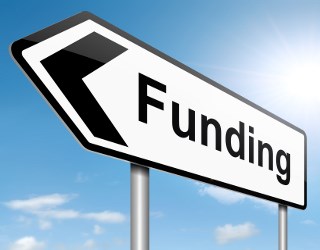, Asia Pacific Economic Cooperation, African Union, Central Bank of West African States - (APEC)05 copy.jpg) Defence & Security
UNDP/PN/01/2021 - National Consultant – Digital Diagnostic Assessment for DRR & Recovery - Nepal
Defence & Security
UNDP/PN/01/2021 - National Consultant – Digital Diagnostic Assessment for DRR & Recovery - Nepal
UNDP/PN/01/2021 - National Consultant – Digital Diagnostic Assessment for DRR & Recovery - Nepal
UNDP/PN/01/2021 - National Consultant – Digital Diagnostic Assessment for DRR & Recovery - Nepal has been closed on 27 Jan 2021. It no longer accepts any bids. For further information, you can contact the United Nations Development Programme
Bellow, you can find more information about this project:
Location: Nepal
General information
United Nations Development Programme
Defence & Security
Closed
Timeline
13 Jan 2021
27 Jan 2021
Not available
Contacts
Description
Description of the assignment:
Over the past decade more than 1.5 billion people have been affected by disasters that have cost at least US$ 1.3 trillion. UNDP’s disaster risk reduction efforts aim to ‘risk-inform’ development in line with the goals and targets of the Sustainable Development Goals (SDGs) and the Sendai Framework for Disaster Risk Reduction (SFDRR). Specifically, UNDP works with country partners to strengthen national and subnational policy, legal and institutional frameworks; foster greater coherence of DRR and climate adaptation efforts; provide access to risk information and early warning systems; and strengthen preparedness and recovery measures. UNDP’s ultimate goal is to strengthen the resilience of countries and urban and rural communities to disaster and climate change.
Despite the efforts, with the current pandemic and worsening vulnerabilities to natural hazards and climate change, countries are confronted with complex and unprecedented problems. In countries where these shocks are happening at the same time - the cascading effects and impacts on health, displacement, business discontinuity, disrupted government services, job and income losses, and erosion of citizens trust and social cohesion will require them to act decisively and quickly to minimize further negative consequences and losses.
Given the worsening risks, vulnerability and inequality, achieving SDGs and SFDRR has become even more challenging. UNDP Disaster Risk Reduction and Recovery for Building Resilience Team based in Bangkok Regional Hub (BRH DRR Team) is embarking on responding to the pressing and crucial need through changing the way disaster data is managed where countries/institutions lack the ability to share, analyze, visualize and use data for policy/decision making, programme planning, budgeting and more importantly in identifying who are most in need of these interventions. It is also essential to change the way vital information are disseminated and used by duty bearers and rights holders especially the most vulnerable. The team has started the implementation of the regional project “Accelerating Disaster Risk Reduction and Enhancing Crisis Response through Digital Solutions” with support from Government of Japan, building on the achievement and partnership under the Global Centre for Disaster Statistics (GCDS). The new regional project aims to strengthen disaster risk reduction and recovery by improving digitalization of disaster data through innovative partnerships and solutions to support risk-informed development so that no one is left behind. The expected outputs of this project are for the governments to establish functional cloud-based digitalized disaster data and access to information on policies, programmes, and expertise though digital solutions. The project is implemented in Indonesia, Nepal, Philippines and Sri Lanka where the above mentioned GCDS partnership has been piloted in last two years.
The Government of Nepal has been taking steps to enhance the country’s efforts to reduce the negative impact from the disasters and build resilience. The Government has recently formulated the National Policy and Action Plan for Disaster Risk Reduction 2018 and its roll out to provinces and local level is in progress. The new Disaster Risk Reduction and Management Act 2017 stipulated establishment of a disaster risk reduction and management authority has already taken place and is taking forward the DRRM issues at national and sub-national levels. A strong disaster damage and loss data system, a baseline on disaster, risk profiles and capacities are critical to enable the country to understand the residual risks, vulnerability of the population and the trend of disaster impact on different sectors including the country’s development gains and economy, and to undertake appropriate policy intervention and operational capacity enhancement for managing climate and disaster risks. Real time information management for a robust decision support system is another crucial aspect in this direction. It is also an essential feature the capacity of the national agencies to monitor and report against the national and global targets, equally important for provincial and local governments. In ensuring all these aspects’ smooth storage, management and effective use of data digitization has become essential for Nepal.
Recognizing the importance of digital tools and technology in evidence-based decision making along with disaster preparedness UNDP together with other members in community of practices in Nepal has started the concept of digitized Vulnerability and Capacity Assessment (VCA) since early 2017 resulting into risk assessments. The concept of this risk assessment is to provide a digital footprint of disaster related exposure, vulnerabilities (identification of poverty pockets, informal settlements, population accessing social security), capacities to identify the risk in local level. Similar to this UNDP has also deployed rapid vulnerability assessment tool to understand the physical vulnerabilities in the urban areas. These tools of mapping hazards, vulnerabilities and capacity have also contributed to enhance understanding of risk of local communities and also enhancing the Disaster Information Management System (BIPAD) at local and national level. Application of these tools in Lalitpur metropolitan areas are guided and linked with the database collected for household for metric system. Other initiatives are mapping of open spaces with usage of drones, modeling of evacuation routes (using short path algorithm) along with identification of key critical infrastructure within the proximity of open spaces for humanitarian use. IOM together with Ministry of Home Affairs (MoHA) in 2019 conducted an updated assessment of 83 open spaces (published in GoN gazette in 2013) in Kathmandu valley, available online. Similarly, Putalibazar municipality, then Pokhara Sub Metropolitan, Resunga Municipality also have mapped out their open spaces. With the learnings from these studies 5 additional mapping of open spaces using drones were carried out in Rasuwagadhi, Bhimeshwor, Gorkha, Sindhupalchowk, Neelkantha municipality and GIS maps along with board were produced for informing local communities. With the recent COVID-19 MoFAGA also introduced Crisis MIS which served as a database for most vulnerable population and daily wage laborers who were supported for the relief distribution. Risk communication being integral part of disaster preparedness also using of social media and bulk SMS has also been popular for raising awareness in DRRM which has also been prioritized by DRR Strategic Action Plan (2018-2030). The social media platform Facebook was also used as an instrument during 2015 earthquake and recent floods, largely by Nepal Police as a crowdsourcing in getting information about missing people and more and mobilizing required emergency assistance.
The Government of Nepal has been collecting and managing voluminous database on various aspects or phases of DRR, that are maintained by the respective focal government agencies with engagement of the partners to provide necessary support. For example, to enhance preparedness, Department of Hydrology and Meteorology has been managing database with placement of the flood early warning systems and weather forecasts. For implementation of the National Building Code (NBC) to enhance safety of the built environment, many municipalities are implementing automated system of electronic building permit system (eBPS – developed for the Govt by UNDP) that promotes accountability in the issuance of NBC and Bye-laws compliant building permits and completion certificates. Through eBPS, a comprehensive database of each of the building built in the municipal jurisdiction are generated that are linked with revenue and can be further used for risk assessment and mitigation. Likewise, National Reconstruction Authority has been maintaining robust MIS system with database of over 800,000 house owners linking damage assessment with socio-economic data, reconstruction progress (both physical and financial) and contribute to the grievance redressal mechanisms. As a latest development, a robust household level database on socio-economic status is being developed by World Bank to support GoN that directly contributes to shock responsive social protection. Digital solutions are developed for Initial Rapid Assessments (post disaster) with the Emergency Operation Centers at district and municipal level to maintain data on disaster impact. Emerging approaches such as forecast based action/financing and shock responsive social protection largely demand digital data management so as to render accurate, fast and efficient services.
Over the years, there have been increased use of various tools for collecting, using and analyzing data and improving our understanding of a disaster caused by natural hazards and help us develop better response and recovery. UNDP Nepal, under the technical support and guidance from Bureau for Regional Hub UNDP Bangkok, is hiring a consultant expert to undertake a digital diagnostic assessment for disaster risk reduction and recovery in the country and provide a report of the assessment with recommendations for future scope and interventions.
Project name: Comprehensive Disaster Risk Management Programme (CDRMP)
Period of assignment/services (if applicable): 22 days (in total) from January to February 2021
Proposal should be submitted by email to [email protected] not later than 1730 hours (Nepal Standard Time) of 27 January 2021 mentioning reference No. UNDP/PN/01/2021 – Digital Diagnostic Assessment for DRR & Recovery.
Receive Daily Tenders and Grants notifications
Subscribe nowFeatured tenders
-
 Tender
05 Mar 2021
Nepal
UNDP/RFP/08/2021 - Digital Diagnostic Assessment for DRR & Recovery
United Nations Development Programme
Tender
05 Mar 2021
Nepal
UNDP/RFP/08/2021 - Digital Diagnostic Assessment for DRR & Recovery
United Nations Development Programme
-
 Tender
17 Feb 2022
Nepal
Re-advertisement: Request for Expression of Interest Design and Implement Training on Gender-Sensitive Reporting on Migration for Nepali Media Personnel
United Nations Capital Development Fund
Tender
17 Feb 2022
Nepal
Re-advertisement: Request for Expression of Interest Design and Implement Training on Gender-Sensitive Reporting on Migration for Nepali Media Personnel
United Nations Capital Development Fund
-
 Tender
04 Jun 2021
Nepal
Invitation to bid for supply and delivery of vehicles to CMDP
United Nations Capital Development Fund
Tender
04 Jun 2021
Nepal
Invitation to bid for supply and delivery of vehicles to CMDP
United Nations Capital Development Fund
-
 Tender
26 Jan 2022
Nepal
Request for Expression of Interest Purpose: Design and Implement Training on Gender-Sensitive Reporting on Migration for Nepali Media Personnel
United Nations Capital Development Fund
Tender
26 Jan 2022
Nepal
Request for Expression of Interest Purpose: Design and Implement Training on Gender-Sensitive Reporting on Migration for Nepali Media Personnel
United Nations Capital Development Fund
-
, Eurasian Development Bank, European Investment Bank, IADB - Inter American Development Bank 03 copy.jpg) Tender
10 Sep 2021
Nepal
UNDP/PN/21/2021 - National Consultant – Team Leader for Final Evaluation of Socio-technical Facilitation Services to Nepal Housing Reconstruction Project (NHRP)
United Nations Development Programme
Tender
10 Sep 2021
Nepal
UNDP/PN/21/2021 - National Consultant – Team Leader for Final Evaluation of Socio-technical Facilitation Services to Nepal Housing Reconstruction Project (NHRP)
United Nations Development Programme
Get free access to our Tenders & Grants Database
Our service is free of charge and will always be
Join NowDonors
-
 CARIBBEAN DEVELOPMENT BANK
CARIBBEAN DEVELOPMENT BANK
-
 EUROPEAN BANK FOR RECONSTRUCTION AND DEVELOPMENT
EUROPEAN BANK FOR RECONSTRUCTION AND DEVELOPMENT
-
 FOREIGN & COMMONWEALTH OFFICE
FOREIGN & COMMONWEALTH OFFICE
-
 GOVERNMENT NOTICES
GOVERNMENT NOTICES
-
 INTERNATIONAL ATOMIC ENERGY AGENCY
INTERNATIONAL ATOMIC ENERGY AGENCY
-
 INTERNATIONAL CRIMINAL COURT
INTERNATIONAL CRIMINAL COURT
-
 INTERNATIONAL MANAGEMENT GROUP
INTERNATIONAL MANAGEMENT GROUP
-
 INTERNATIONAL PLANNED PARENTHOOD FEDERATION SOUTH ASIA REGION
INTERNATIONAL PLANNED PARENTHOOD FEDERATION SOUTH ASIA REGION
-
 SECRETARIAT OF THE PACIFIC COMMUNITY
SECRETARIAT OF THE PACIFIC COMMUNITY
-
 UNITED NATIONS PROGRAMME ON HIV/AIDS
UNITED NATIONS PROGRAMME ON HIV/AIDS